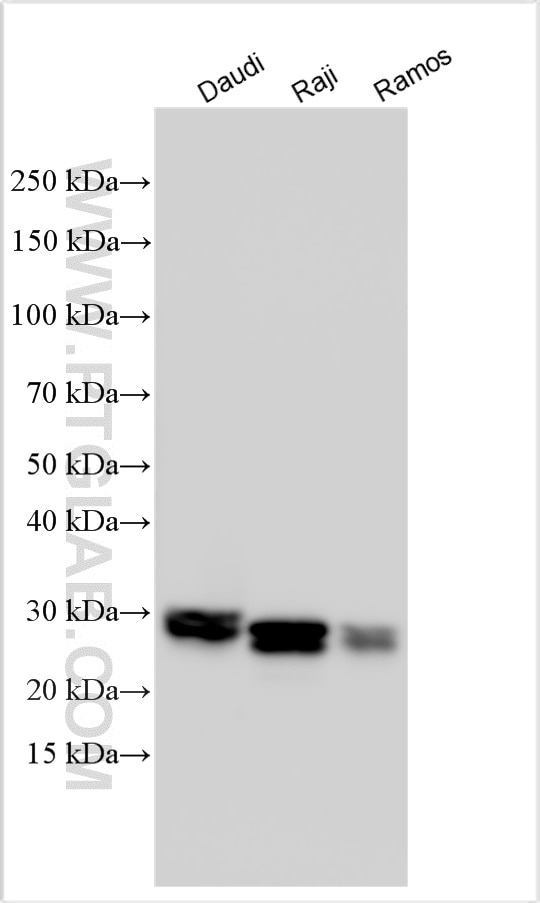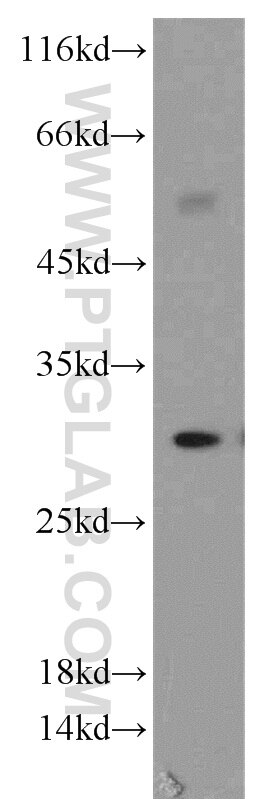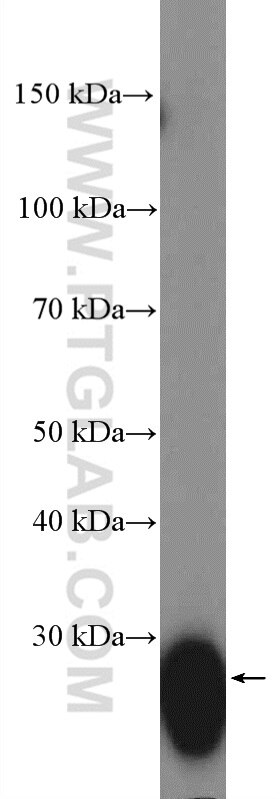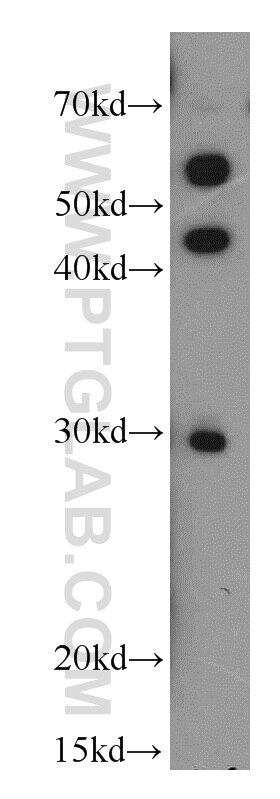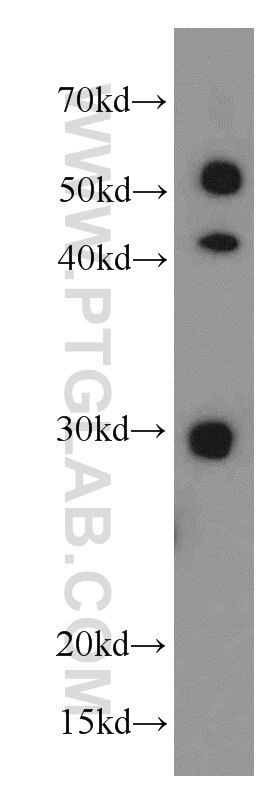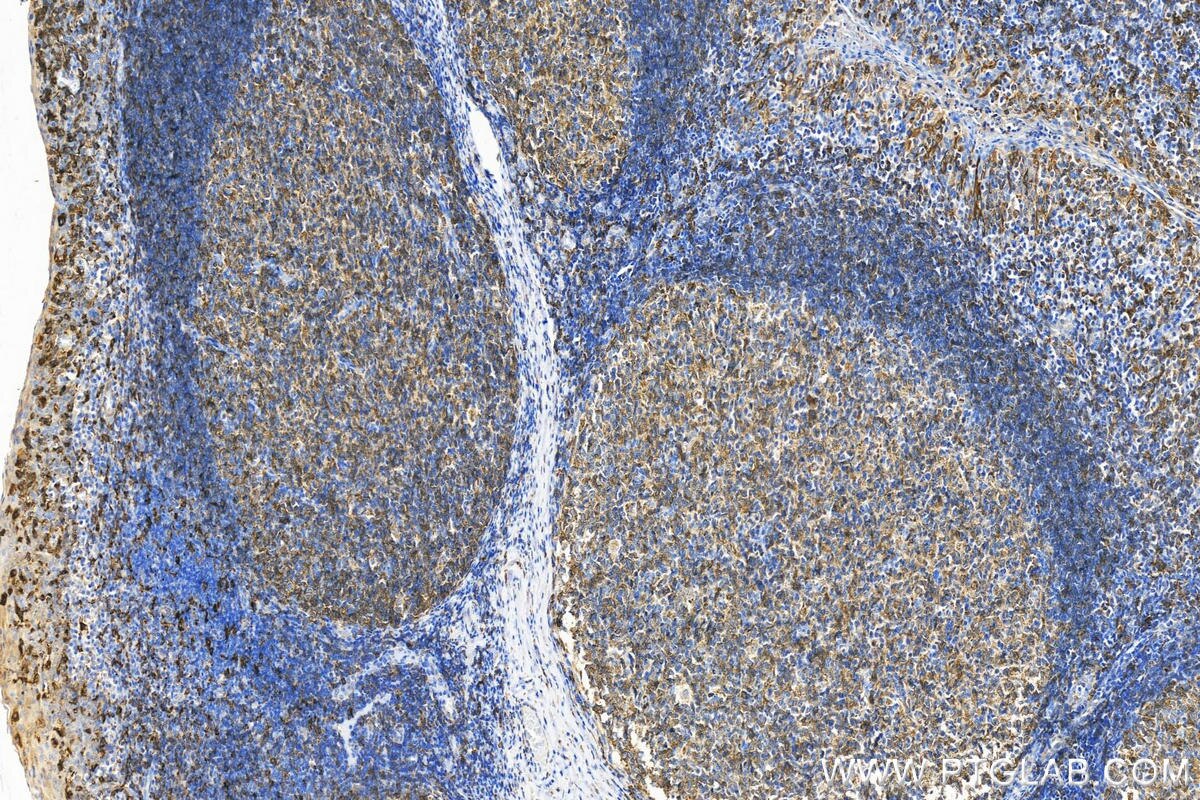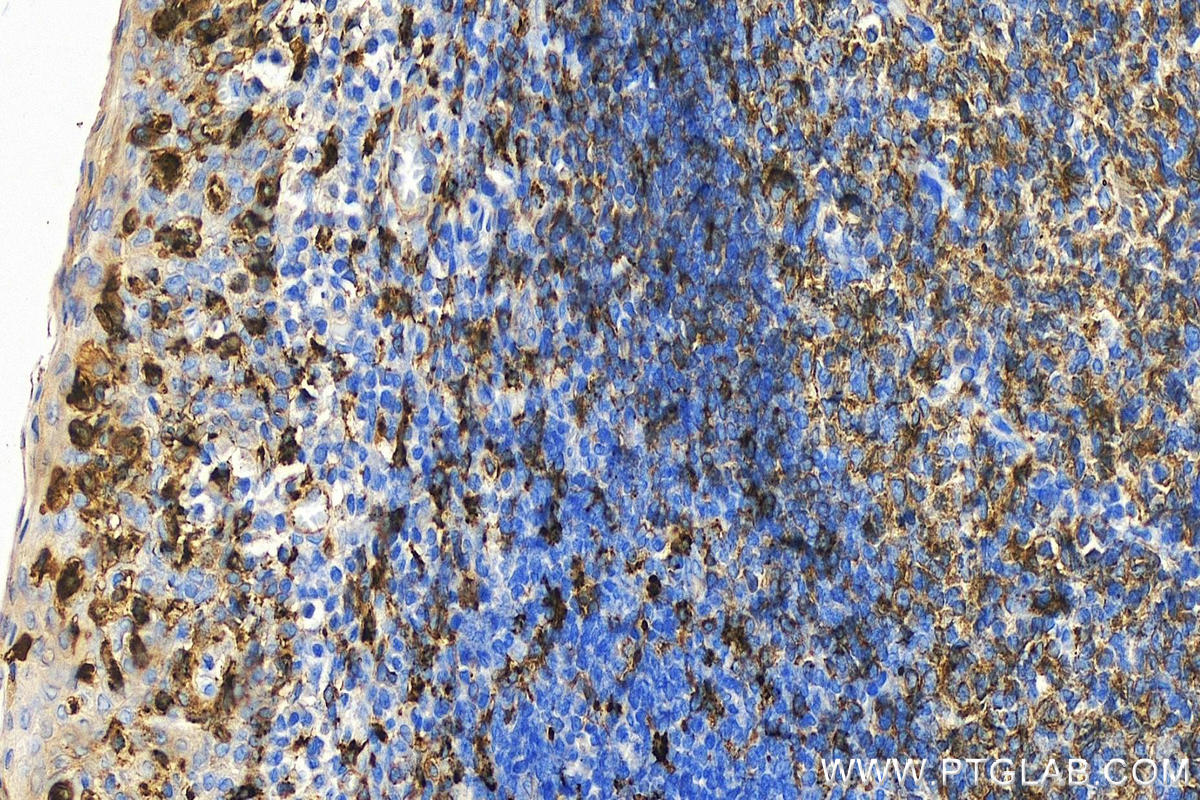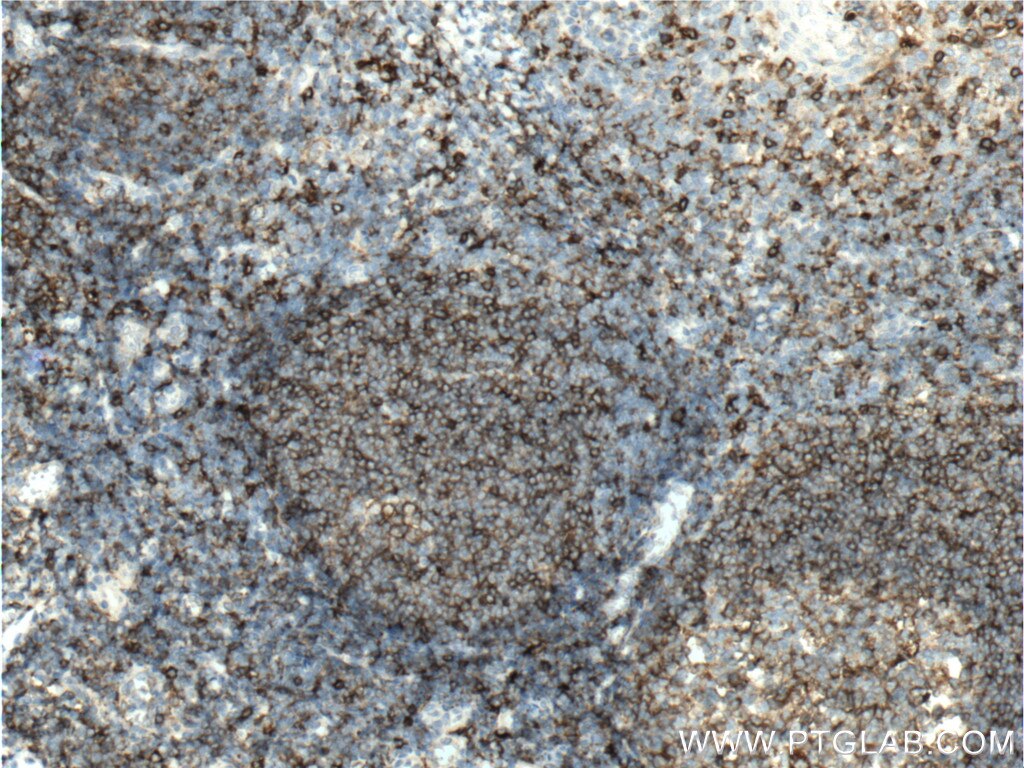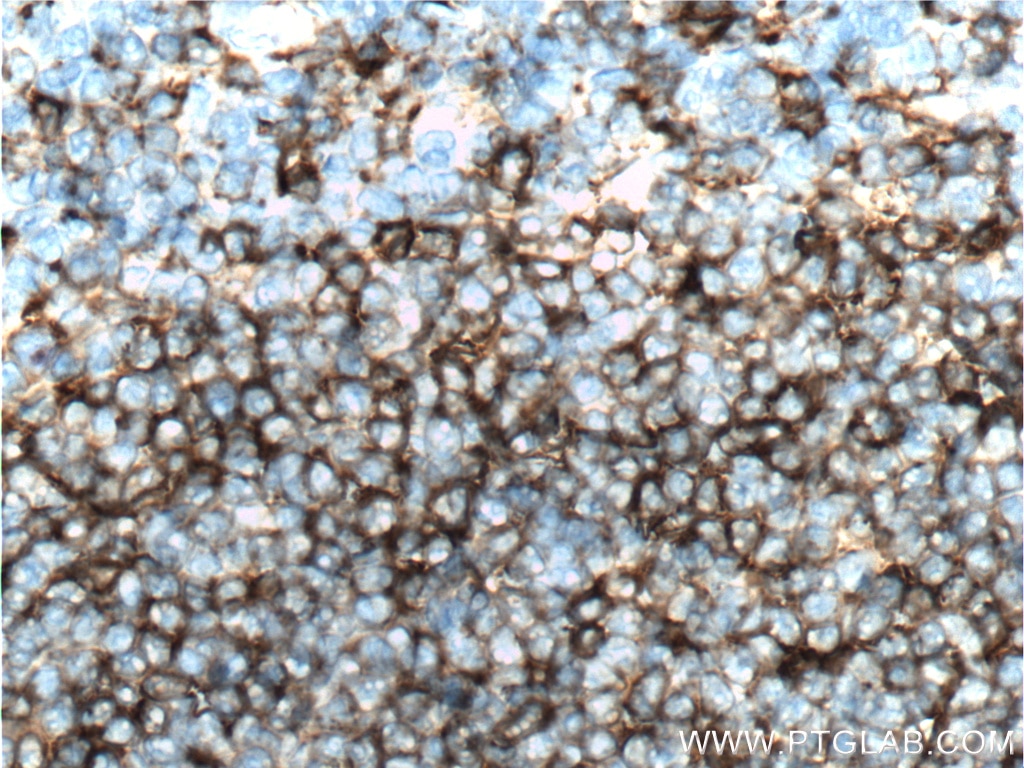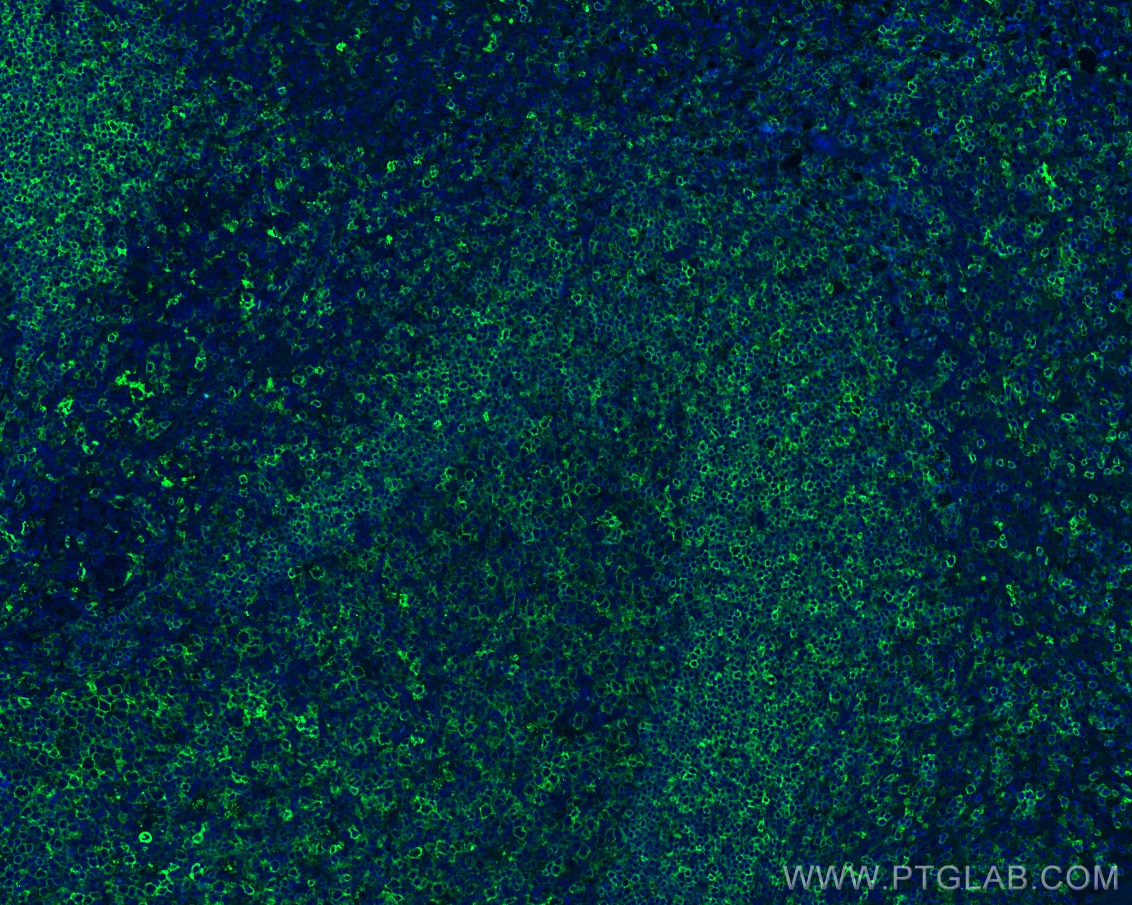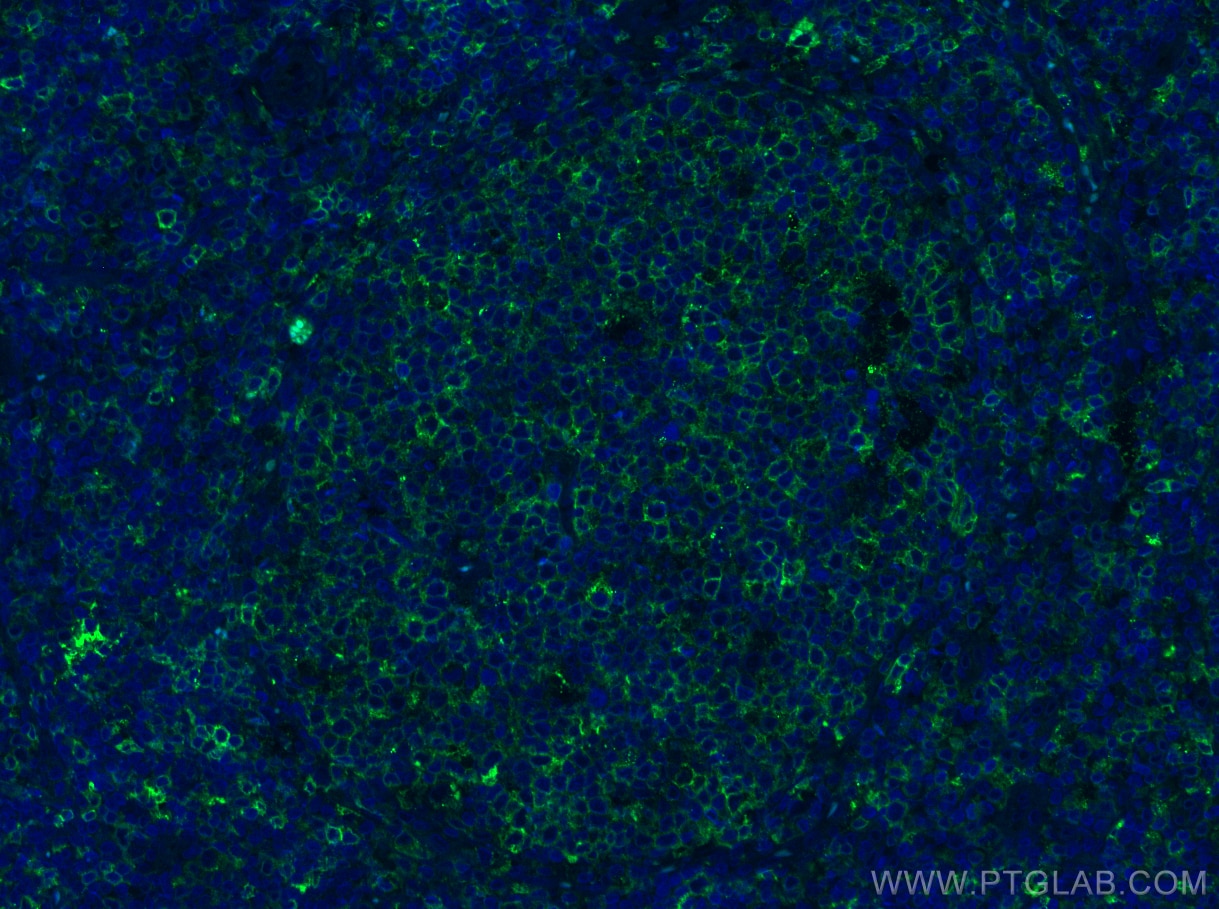HLA-DRB5 Polyklonaler Antikörper
HLA-DRB5 Polyklonal Antikörper für WB, IHC, IF-P, ELISA
Wirt / Isotyp
Kaninchen / IgG
Getestete Reaktivität
human, Maus, Ratte
Anwendung
WB, IHC, IF-P, ELISA
Konjugation
Unkonjugiert
Kat-Nr. : 21702-1-AP
Synonyme
Geprüfte Anwendungen
| Erfolgreiche Detektion in WB | Daudi-Zellen, HeLa-Zellen, HepG2-Zellen, HL-60-Zellen, Raji-Zellen, Ramos-Zellen |
| Erfolgreiche Detektion in IHC | humanes Tonsillitisgewebe Hinweis: Antigendemaskierung mit TE-Puffer pH 9,0 empfohlen. (*) Wahlweise kann die Antigendemaskierung auch mit Citratpuffer pH 6,0 erfolgen. |
| Erfolgreiche Detektion in IF-P | humanes Tonsillitisgewebe |
Empfohlene Verdünnung
| Anwendung | Verdünnung |
|---|---|
| Western Blot (WB) | WB : 1:1000-1:4000 |
| Immunhistochemie (IHC) | IHC : 1:200-1:800 |
| Immunfluoreszenz (IF)-P | IF-P : 1:50-1:500 |
| It is recommended that this reagent should be titrated in each testing system to obtain optimal results. | |
| Sample-dependent, check data in validation data gallery | |
Veröffentlichte Anwendungen
| WB | See 1 publications below |
Produktinformation
21702-1-AP bindet in WB, IHC, IF-P, ELISA HLA-DRB5 und zeigt Reaktivität mit human, Maus, Ratten
| Getestete Reaktivität | human, Maus, Ratte |
| Wirt / Isotyp | Kaninchen / IgG |
| Klonalität | Polyklonal |
| Typ | Antikörper |
| Immunogen | HLA-DRB5 fusion protein Ag16307 |
| Vollständiger Name | major histocompatibility complex, class II, DR beta 5 |
| Berechnetes Molekulargewicht | 266 aa, 30 kDa |
| Beobachtetes Molekulargewicht | 30 kDa |
| GenBank-Zugangsnummer | BC009234 |
| Gene symbol | HLA-DRB5 |
| Gene ID (NCBI) | 3127 |
| Konjugation | Unkonjugiert |
| Form | Liquid |
| Reinigungsmethode | Antigen-Affinitätsreinigung |
| Lagerungspuffer | PBS with 0.02% sodium azide and 50% glycerol |
| Lagerungsbedingungen | Bei -20°C lagern. Nach dem Versand ein Jahr lang stabil Aliquotieren ist bei -20oC Lagerung nicht notwendig. 20ul Größen enthalten 0,1% BSA. |
Protokolle
| PRODUKTSPEZIFISCHE PROTOKOLLE | |
|---|---|
| WB protocol for HLA-DRB5 antibody 21702-1-AP | Protokoll herunterladen |
| IHC protocol for HLA-DRB5 antibody 21702-1-AP | Protokoll herunterladenl |
| IF protocol for HLA-DRB5 antibody 21702-1-AP | Protokoll herunterladen |
| STANDARD-PROTOKOLLE | |
|---|---|
| Klicken Sie hier, um unsere Standardprotokolle anzuzeigen |
Rezensionen
The reviews below have been submitted by verified Proteintech customers who received an incentive for providing their feedback.
FH Sofia (Verified Customer) (02-03-2025) | Antibody works fine in IHC and IF, in tissue and cells. For Western blot doesn't work as well as in the other techniques.
|
